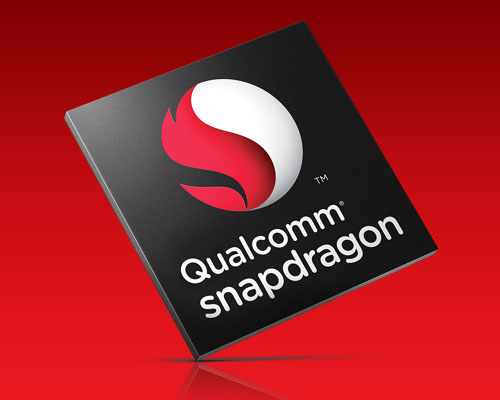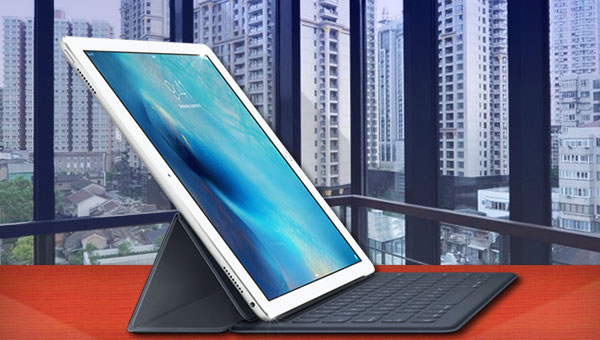Given that it is basically a big iPad with a better keyboard option and stylus support, the iPad Pro has been getting decent reviews. It can be classified as a first-generation product — and as such, it does far better than most.
However, there have been a huge number of companies in Apple’s space that have gone under or stalled when they switched from focusing exclusively on the consumer and tried to do IT. In fact, I can’t really point to any firm that has done that well.
So, the question is, will this pivot change Apple for the worse? I don’t think so. Apple may have figured out how to sidestep this problem.
I’ll share my thoughts on that and close with my product of the week: the Qualcomm Snapdragon 820, which heralds the biggest change in smartphones this decade.
The Tech Curses
Along with many other analysts, I believe there are two curses that are alive and well in the tech industry. One is the curse of the palatial new headquarters. For some time, we watched company after company put up a palatial new corporate office only to fail shortly thereafter. The computer history museum is actually in one of those buildings, which was built for Silicon Graphics. Poor Novell never even got its headquarters built — it announced its plans, just before imploding. Apple’s flying saucer is about as palatial as we’ve ever seen.
The other — and more pertinent to this piece — is the flip from consumer focus to corporate focus. Back in the 1980s, the most powerful PC company wasn’t Apple or Microsoft. It was Commodore, and it dominated right up until it decided to create a business-focused machine.
Apple’s biggest failure in that decade was the Lisa, which largely was business-focused. After having the most successful consumer-focused product in Windows 95, Microsoft decided to force-feed its enterprise product, Windows NT, which hadn’t been selling that well, to the same audience. It went from nearly 100 percent share to, well, a shadow of that. One of the efforts Steve Jobs killed when he came back to Apple was its business-focused PC effort (granted, along with PDAs, printers, cameras, etc.).
With both curses, I think the core problem is focus. In building a palatial headquarters, executives shift focus from product to jockeying for who will get the best office, office appointments and other perks. When shifting to the enterprise, the focus moves from features and functions the user wants to compliance, volume pricing games, and trying not to change things.
For the enterprise, excitement is a bad thing. What has made me wonder about the sanity of executives who make this move is that users can be motivated to buy new and interesting things as often as every 12 months, while enterprise buyers would prefer a replacement cycle longer than five years — often much longer. Oh, and if users want something like an iPad or Windows 95, they’ll drag it in over IT’s objections. If IT wants something that the users don’t want — like terminals or thin clients — it generally doesn’t sell well.
From this, the “smart” technology companies decide, hey let’s focus on IT and let the users pound sand, and the result pretty much sucks. I’ll bet you can’t tell I’m tired of watching people relearn that lesson.
What Makes Apple Different
Apple is doing a number of really smart things in this case.
First, Tim Cook has given up his Mac and is carrying a Windows PC. No, just kidding, he is carrying an iPad Pro. I’ve often felt the CEO should become a personal advocate for a company’s business-oriented products. CEOs who do so can ensure that their company’s products meet the needs of the user, because they are users — and their needs won’t be ignored. It makes them into real believers in the product, not just extremely well-paid shills. Cook’s hands-on experience should ensure the product remains focused on the user, even as the effort pivots to address IT’s needs.
Second, Apple is not building an enterprise channel — it is using Cisco’s and IBM’s channels to move the product. That keeps Apple focused on the user while letting its distribution partners focus on making the enterprise IT shops happy.
The only problem with this is that at least some of the enterprise requirements do have to make it back into the product over time to ensure the offering’s success — particularly in areas like security and management. That doesn’t seem to be happening yet. However, given history, I think it is far better that some of the enterprise needs be unmet than it would be if Apple started missing user requirements.
The iPad Pro
There are three initial problems with the iPad Pro, though none of them are deal killers. I expect most will be addressed in the next product if Apple listens.
It doesn’t have a touchpad on the keyboard. Taking your hands off the keys to touch the screen is annoying when you are moving fast, and given that Apple hasn’t put touchscreens on its PCs, this omission seems particularly strange.
The lack of a USB port means certain required accessories, like some types of secure memory, USB RSA tokens, and lots of printers can’t be used with the device, which will be a problem for a lot of shops where people are trying to use them as laptops.
Finally, the feel of the stylus isn’t right yet, suggesting Apple did this itself and didn’t buy the tip from one of the firms developing in this space for over a decade. On this last, there is a chance that some users actually might find the Apple feel better — for example, those who don’t go back and forth between the iPad and paper, or those who just started with tablets and never developed paper muscle memory.
The iPad Pro is not bad for a first shot, but how quickly Apple steps up and addresses these shortcomings will tell us how strong its relationship is with Cisco and IBM, and whether these are true partnerships or partnerships in name only.
Wrapping Up
The use of Cisco and IBM coupled with Tim Cook’s personal engagement with the iPad Pro should ensure the product’s success. It really will depend on just how much Cisco and IBM influence future products; it needs to be enough to hit IT minimums, but not enough to break the connection with users — and the latter is more important than the former.
While there are some initial issues with the product, it likely will go down as one of the best first-generation offerings from any company, and that is a strong indication of its future success.
In the end, products like the iPad Pro, the Surface Pro, and the Surface Book showcase a renewed focus on creating devices users really can love, and that push the envelope on portability and battery life. For those of us who live off products like this, there is nothing bad about that.
Last week I got my updated briefing on the Qualcomm Snapdragon 820, which will show up in phones and a few tablets, robots, drones and cars starting in 2016 . It just started shipping.

Typically, we see a 5 percent performance improvement year over year in smartphones, and once in a decade we get a huge jump due to a big technology change — and this is that part. Qualcomm is forecasting a 30 percent performance jump in processing power with this generation and a 2x or better performance jump in network data speeds.
In addition, we’ll get better sound (both separation and volume), better pictures (less artifacts, better color saturation, less ghosting, better color accuracy), better security (both biometric and antimalware), better charging (long-distance wireless resonance charging and faster charging), and longer battery life.
Increasingly, we are living off our phones, and this will make a lot of the things that really are annoying — like remembering passwords (or getting the damn fingerprint reader to work right), running out of power (or worrying about running out of power), and pictures that suck — be things of the past.
For folks who replace their phones next year with one that uses this part, you’ll see a near day-and-night difference if the OEM turns on most of these features, though unfortunately, they often don’t. This is only for top-of-the-line phones. If you buy on a budget, 2017 may be the better year for you.
Because the Snapdragon 820 will be like putting a supercharger — I’m a big fan of superchargers — on your phone, it is my product of the week.
























































